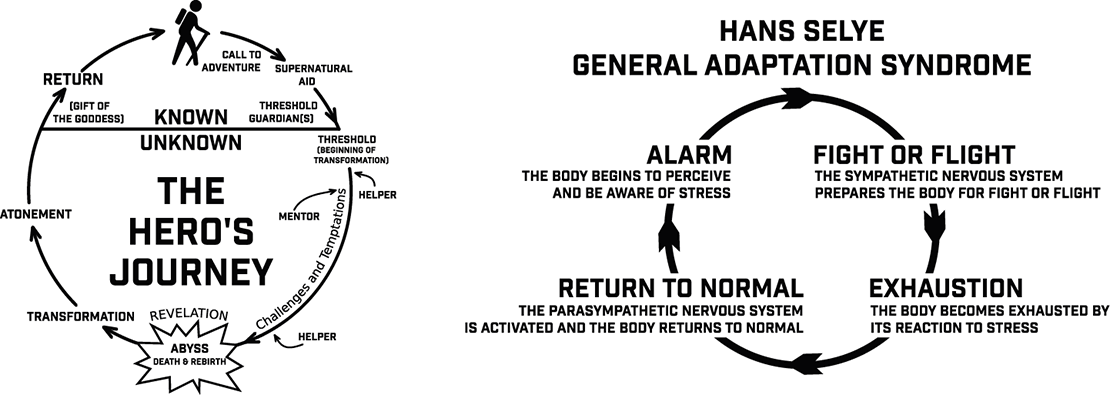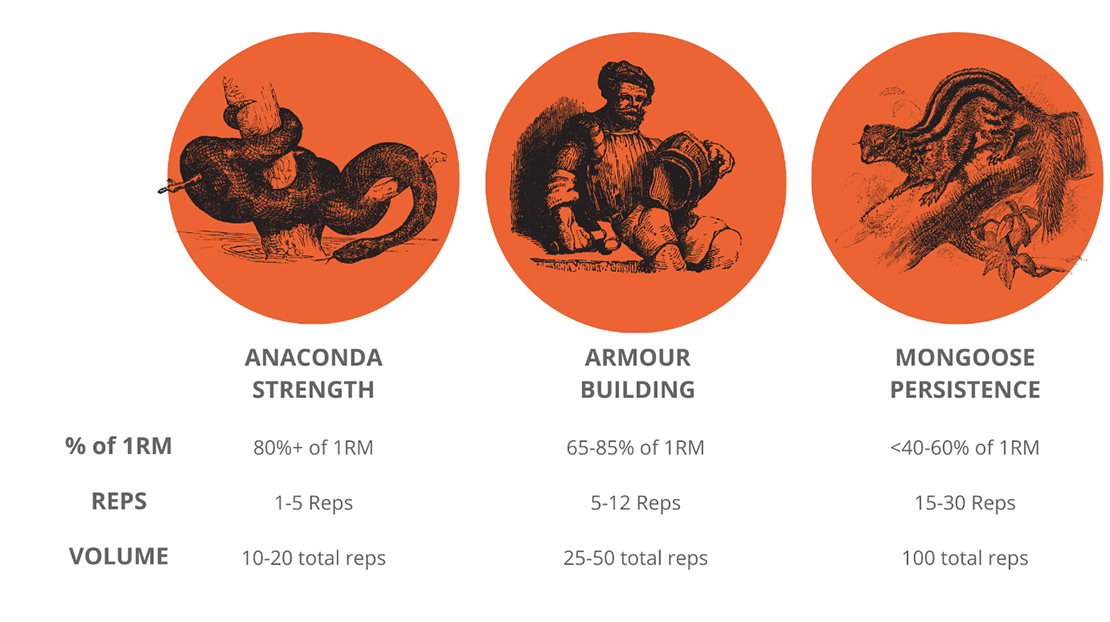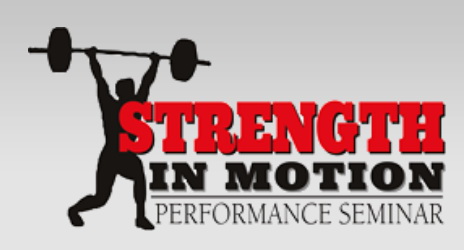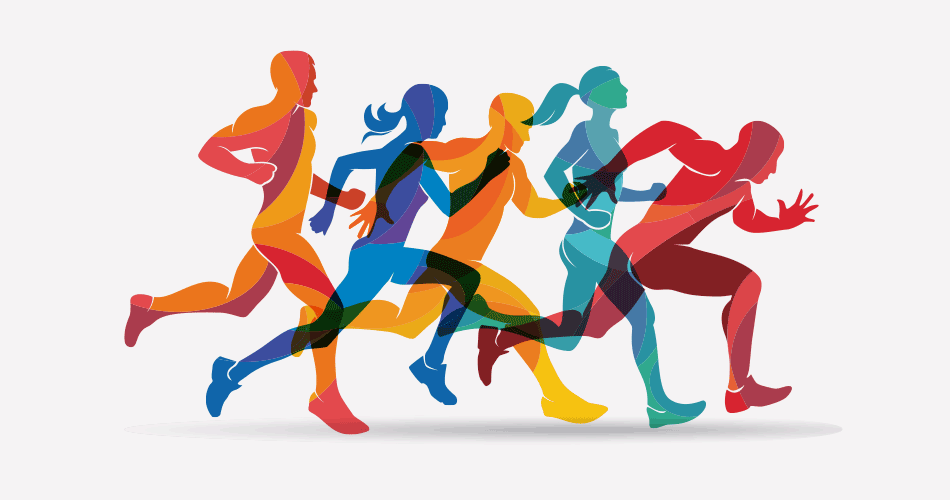Narrative Approach to Training
The training process is often compressed into talk of physiology, stress, biomechanics, and science. These technically are framing devices for one thing, ‘change.’ With any training cycle, technically being about manifesting favorable change in an athlete. Athletes, however, often do not think like this; they think in the narrative that plants them as the hero of their own story. The client journey is not a series of physiological checkboxes but a narrative journey you must be part of. I have seen many ‘smart’ coaches lose clients this way. It’s also why the coaching community has such a strained relationship with sports scientists, now imagine how distant the relationship with the average trainee is.
Complementary training owner Mladen Jovanovic proposes that most of our ideas of how to act come from a plethora of experience, implicit knowledge, journals, ideologies, etc (what he refers to as the known or prior knowledge). These priors feed into every new training phase. We know some sort of training dose will get an outcome but we cannot predict exactly what (we can predict the average effect, but not quantity). This gets trickier the more experienced our client especially as they reach the heights of elite performance.

Hans Selye’s theory of adaptation a classic stress model that predicts, stress & subsequent super-compensation. It often forms the cornerstone of most sports performance underpinning the physiological driver of change. While Selye focused on how hormones and the interplay of sympathetic and parasympathetic systems dealt with non-athletic stress, as Russian sports training theorists in the 1960s used his ideas to explain how an athlete’s performance improved with the correct application of training stresses. This is why Selye’s theory is often given so much lip service in sports training and sports science methods that use soviet literature as a foundation.
General adaptation syndrome or GAS theory also offered a physiological rationale as to why adequate recovery was an essential part of the athlete’s training program. Around the same time, exercise physiologists began exploring adaptations taking place due to different forms of training stresses. What however this model does not account for is the phenomenology of the whole process, the many pitfalls, traps & monsters that can dog our path to improvement. Tom Farrow pointed out the structural similarities between the stress model and the heroes’ journey model put forwards by Joseph Campbell. Training an athlete is more complicated than just stress in improvement out, or just a series of physiological boxes to be checked or a training model to ascribe to. Life is chaotic and occasionally unpredictable, so regardless of the sophistication of your approach you are still rolling the dice with the unknown. So, in effect, the athlete’s training journey behaves more like the heroes’ journey, in effect a cycle of transformation.
What is the heroes’ journey exactly? The hero’s journey, or the ‘monomyth’, is the common template of stories or successive stories that involve a hero who goes on an adventure (stress/fight or flight), is victorious in a decisive crisis (exhaustion), and comes home changed or transformed (return to normal/changed for better). The only criticisms of Campbell are from social scientists claiming the approach is too monolithic. That may be so but it makes for a hell of a useful heuristic in the way we approach training athletes. Effectively what I am suggesting is seeing an athlete’s training and subsequent career as a metanarrative or a series of narratives.
What do we mean by narrative approach?
The narrative is essentially how we frame our lives, our aims, our ambitions both long and short term, in short, it is how we comprehend the world. The narratives usually follow the movement from point A to point B and what happens between those points helps us learn so we can construct a better future.
It is important that athletic endeavor is seen as an embodiment of the hero myth, a striving for improvement via transformation, something be admired and replicated. Heather Reid in Sports Ethic’s & Philosophy draws comparison to athletes of yore playing a role in re-enacting the hero myth and today’s athletes playing the same role. “Ancient athletes were not heroes, rather they re-enacted heroic struggles, thereby experiencing heroic virtues, and inspiring both artists and spectators to bond with the higher ideals implied by their shared belief in divine ancestry… Insofar as modern sport performs a similar service, its association with heroism and with moral education may ultimately be justified.”
So, the understanding narrative is important to figuring your role in regard to the athlete. You have to embrace the cyclical process as you are pushing your client or yourself into the unknown while keeping one foot in the known. To eventually circle back with something worthwhile to repeat the cycle yet again getting better every time. Understanding that each journey (cycle) while similar might not be the same. It may help your perspective to see yourself as Gandalf pushing bilbo to stop sitting on his ass and do something worthwhile.
The contention between what is known and what is unknown informs the training direction, planned steps into the unknown represent needed stimulus. Repeat continued familiar stimulus results in non-adaptation, it’s safe, it’s warm but it does not bring much-needed transformation. The more succinct phrase would ‘do what you’ve always done get what you’ve always got’.
We see this issue play out writ large with the general public and the issues surrounding weight loss and obesity. Safety and contentment are preferable to challenge and transformation, it’s why problems of abundance are now replacing problems of scarcity. Athletes do and will fall into the same trap, especially those that find success early in their career, the best athletes however iterate themselves continuously.
Transforming sports by taking bounded risks.
Strength and conditioning is fundamentally predicated on the idea you are not being all you could be. In most sports, this is implicit as physical culture is part of the broader sports cultures. Boxing has its ‘rocky montages’, American football has its weight room hype sessions and who knows how many Instagram ‘performance training’ videos.
Working in golf for a while now it’s been interesting to see a sports culture comfortable with its willingness to leave something on the table either through ignorance or hesitance. While for some sports doing less could be a virtue, for golf in particular this realisation of ‘leaving something on the table’ thanks to a number of next-generation athletes has hit hard. Tapping into physicality (a previously unknown domain for many) has led to new technical and tactical optionality, point is someone had to take that risk and step into the unknown. This has been framed as a ‘debate’ in the golf media but is not really a debate, it is an evolution and change always has its detractors.
“They should have been worried a long time ago, but the genie’s out of the bag now…guys are figuring out how to carry the ball 320-plus yards, and it’s not just a few of them”
From a phenomenological perspective and a narrative one, not many people in golf were willing to make the jump into physical training because of the convention, dogma, and a lack of understanding but also a performance model predicated on optimisation over robustness.
What applying the narrative approach means?
As demonstrated above, in golf there was a pervasive narrative that golf needs neither strength nor resistance training to obtain golf-specific performance improvements. The key with the narrative approach is, by understanding the narrative we can attempt to change it. A lot of modern strength coaches are starting to throw communication around like a buzzword, as somehow emphasising the need for ‘communication’ on its own is a virtue. Communication with athletes is important undoubtedly, but communication is nothing without having something worthwhile communicating. And narratives are the driving force behind appropriate communication.
I’ve seen young coach’s fresh off sports science degrees pretty much throw verbal textbooks at their athletes in an attempt to obtain ‘buy-in’ when asked “why are we doing this?” One of the jobs we undertake with interns, often all too keen to show off how smart they are, is to teach them to serve the athlete and under no circumstances make the athlete feel foolish or stupid.
An example narrative with golfers.
If you are a professional golfer fundamentally your aim is to win prize money, to provide for your needs and play more professional golf, a lifestyle that many often dream of. I can demonstrate that athletes who hit the ball further win more prize money. A large element of hitting the ball further is high clubhead speeds. High clubhead speed correlates with a number of physical measures. These physical measures also are indicative of athletes who are less likely to get injured.
So, with that you have a narrative of maximising upsides while minimising downsides, as a coach part of the job is to suggest ‘take the bounded risk and here’s why…’. On the face of it, who does not want to win more money? It’s obvious, right? The key is doing this without suggesting that they are foolish for not seeing it themselves.
Some athletes may drop in further down that list of priorities, for instance, physical wellness and health are maybe most important to the athlete that is injured, whereas finding an edge to beat a rival might be more important to the athlete who is perennially 2nd place. Meet the athlete where they are and then you can guide them to where they want to be.
The narrative can also be used as a framing device for the way one trains, I recently put together material about my own approach to working grapplers. One of the narrative devices is coding the methods in a language to better help athletes grasp the purpose of what we are trying to achieve. Inspired by both Mladen and Dan John.

You talk to MMA fighters or grapplers about maximum strength, hypertrophy, or worse yet exercise physiology, especially as it pertains to conditioning and you will lose them quickly. Devices like those in the example above help frame the intention of a training approach via associative identity. Instead of gaining mass, bodybuilding, or hypertrophy, for example, using ‘armor building’ gets more buy in from the class of athletes worried about weight or being ‘too muscular’.
Why the narrative approach is more pragmatic
Pragmatism is a philosophical tradition that – very broadly – understands knowing the world as inseparable from the agency within it. The idea that a claim is true if and only if it is useful, experience consists of transacting with rather than representing nature of the world, that articulate language rests on a deep bed of shared human practices that can never be fully ‘made explicit’. That’s all very eloquent right, but how does this influence me as a coach?
Simply put as a coach you are interested in the ‘practical consequences’ of any intervention you employ. And that any intervention is ideally seeking a desirable outcome, believe it our not many coaches still do things and employ methods, that are either unsound, poorly thought out or even dangerous. This is often a skin in the game issue as they personally do not have to bear the consequence of their intervention. The consequence and narrative approach are tied through transformation. Positive transformation further builds into a positive narrative that the coach-athlete relationship is worth pursuing.
It’s not just coaches either, sports scientists often come to conclusions from research where the actual methodologies used are totally unrealistic or the findings either vague or unworkable in a real-world environment, an absence of consequence and speculation about consequence is not the same as bearing it. This is where narrative approaches can also make for better sports science.
Better sports science via narrative approach
As mentioned earlier the relationship between sports science and the actual practice of coaching is a complicated one, for one main reason. Most sports science material is written for the review and dissemination of other sports scientists. Most S&C coaches benefit from a formative education and can often disseminate the information sports scientists produce on their own. Most sports coaches however do not. Most sports coaches I’ve worked with admit to not ever really reading sports science research often due to the inaccessible way most research is written. The key to the narrative approach is meeting people where they are, there have been calls to use ‘appropriate “lay” language in information dissemination.’ How does key information the ‘helper’ in our narrative story, help me transform my thinking to make better-informed decisions on any particular subject? It’s part of the role of sports scientists to consider how we can communicate information.
Making the most of narrative thinking
The idea the athlete is on a journey is a powerful one and the coach-athlete relationship is one fostered on bounded risks, both is a sporting sense and general preparatory one in varying ways. While it’s not all sets and reps, a narrative approach to how we frame training can make each set and rep more meaningful. It is crucial however to think of it as a journey where the athletes know the destination or aim and that is the coach’s responsibility to guide not steer. Occasionally you might have to grab the wheel. Or as I like to say ‘I will give you the keys, but you have to drive’.
References
- Reid H. (2017) Athletes as heroes and role models: an ancient model, Sport, Ethics and Philosophy, 11:1, 40-51, DOI: 10.1080/17511321.2016.1261931
- Jovanović M. (2020). Strength Training Manual: The Agile Periodization Approach. Independently published. ISBN: 979-8604459898
- Williams S. J., & Kendall L. (2007) Perceptions of elite coaches and sports scientists of the research needs for elite coaching practice, Journal of Sports Sciences, 25:14, 1577-1586, DOI: 10.1080/02640410701245550
- Wayland, W. Practical Strength Training For Grapplers. (2020) technqly. URL: https://techniqly.com/shop/william-wayland-practical-strength-for-grapplers/











Responses